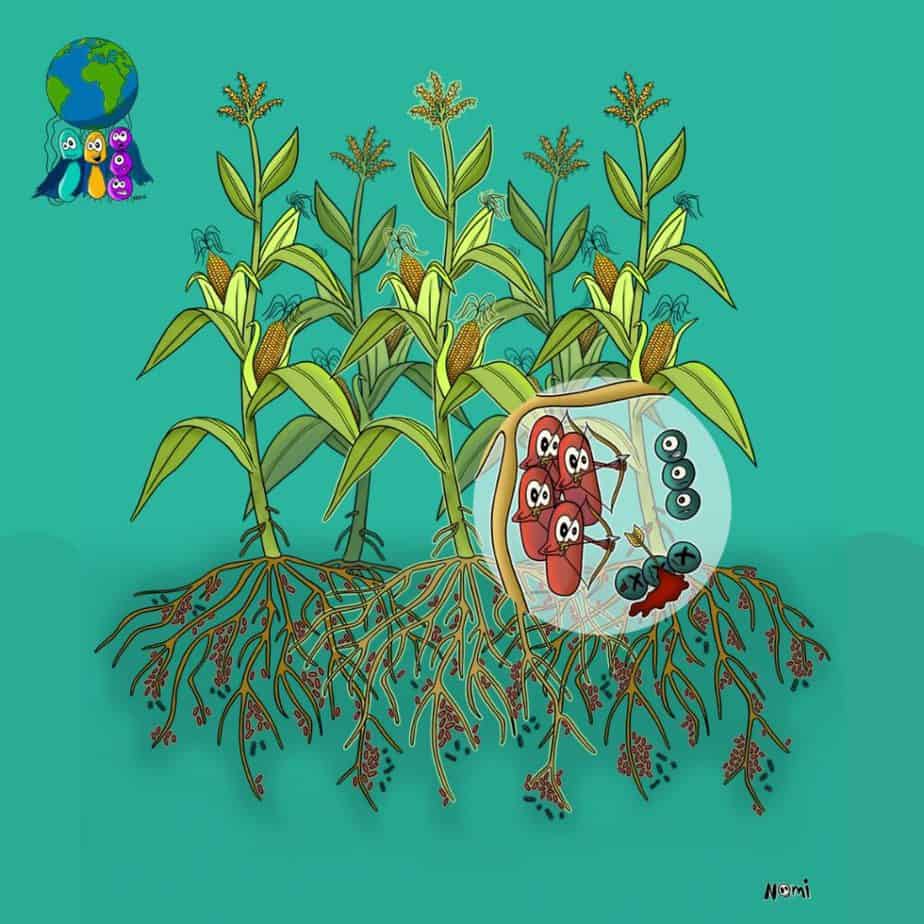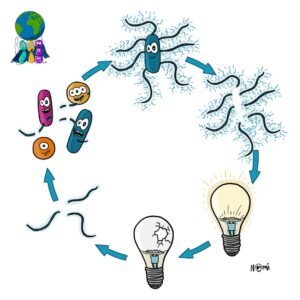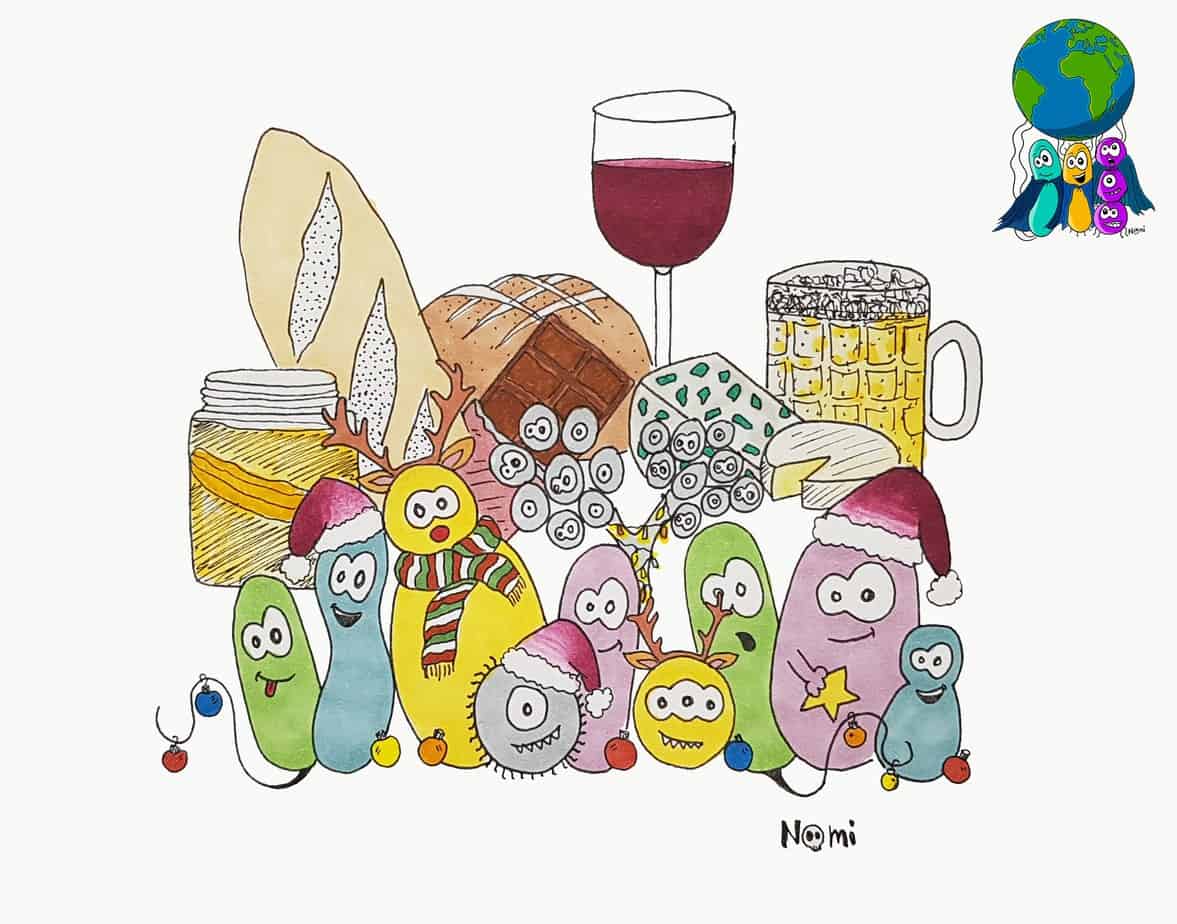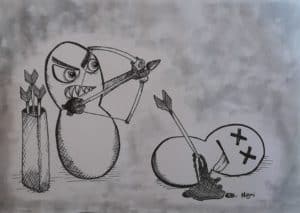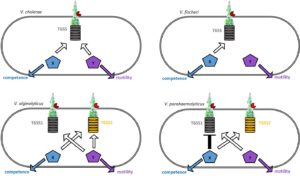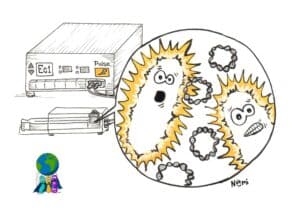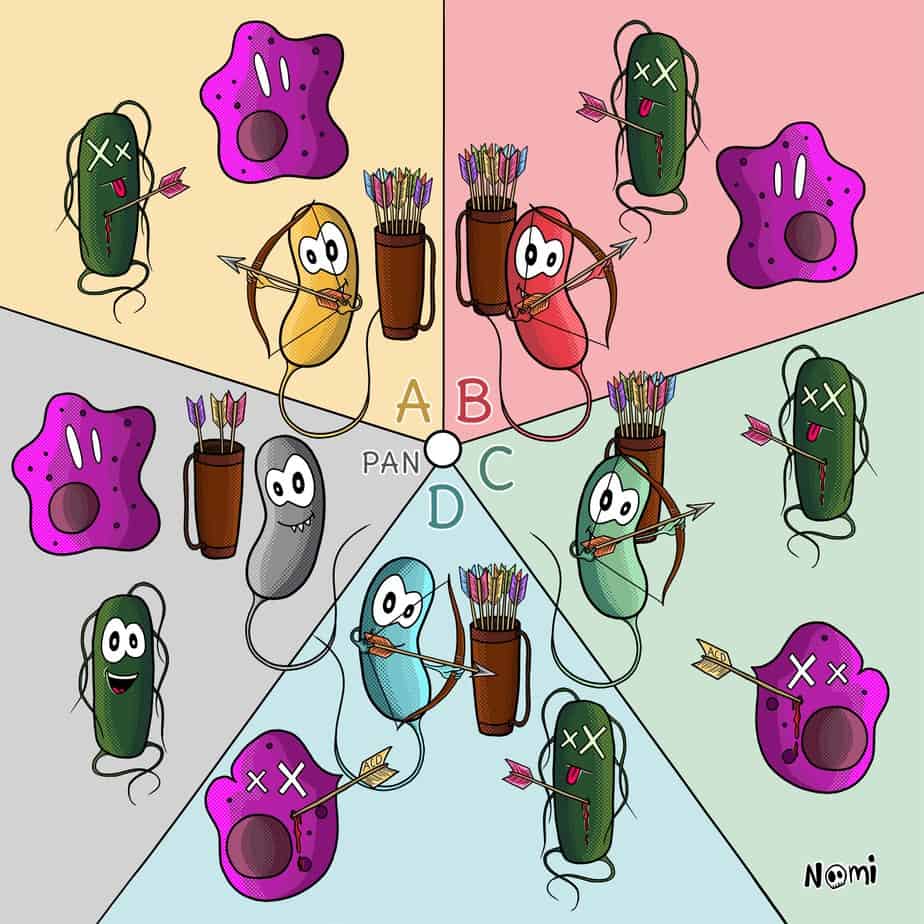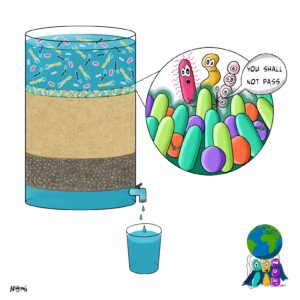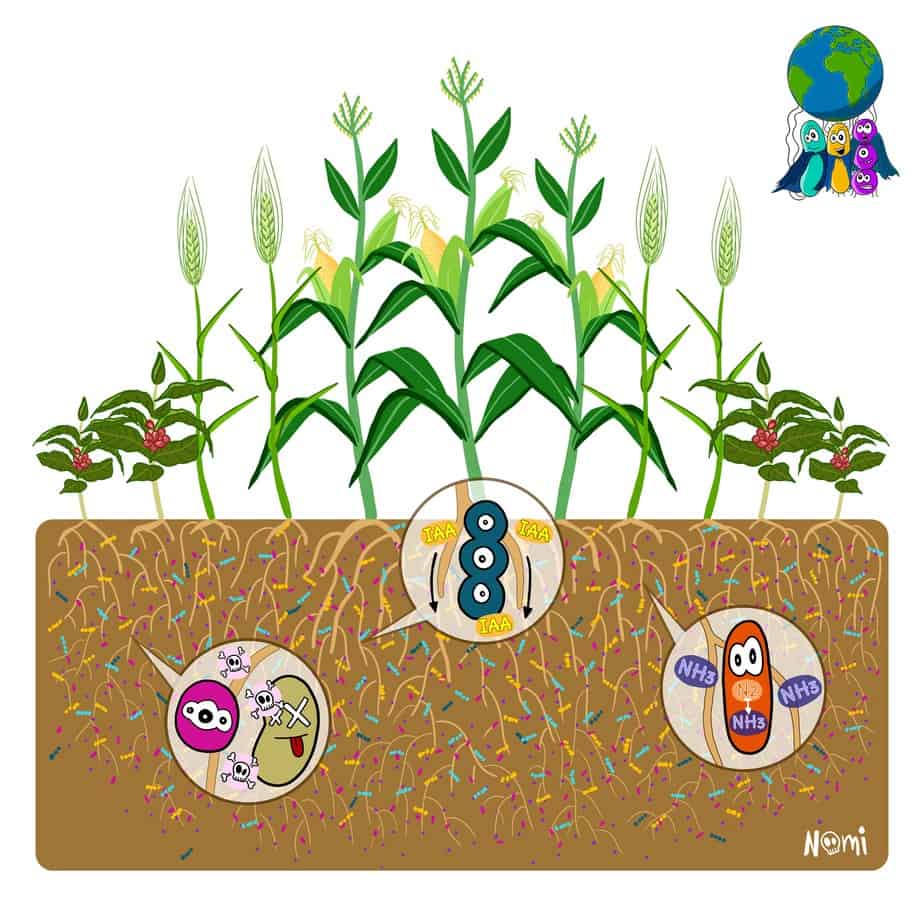Our planet is overgrowing with people that want to be fed.
And more and more people become aware that a plant-based diet is not only better for your health, but also for our planet. Hence, the focus on agriculture right now is to become more sustainable to grow enough plant-based food for everyone.
This means that we need to find better ways to support plant growth and protect plants from diseases. Unfortunately, several plants pathogens make plants sick, so they die or do not grow enough crops.
Currently, we use fertilizers and pesticides to protect plants from pathogens. However, these chemicals are bad for the environment long-term as they contaminate the soil and water.
Hence, we need to find ways to protect plants by either getting rid of dangerous intruders or by strengthening the immune systems of plants.
Enter bacteria and their superpowers.
They do both.
What is biocontrol?
Some bacteria that live in or on plants are called biocontrol agents. These organisms are harmless to the plant and have two main functions: They protect the plant from pests and diseases and support its growth and crops.
Some of these organisms additionally strengthen the plant’s immune system or resistance – again to protect the plant from disease and help it grow.
One such biocontrol agent is the bacterium Pseudomonas putida. It grows near the roots of many plants where it produces helpful molecules for the plant.
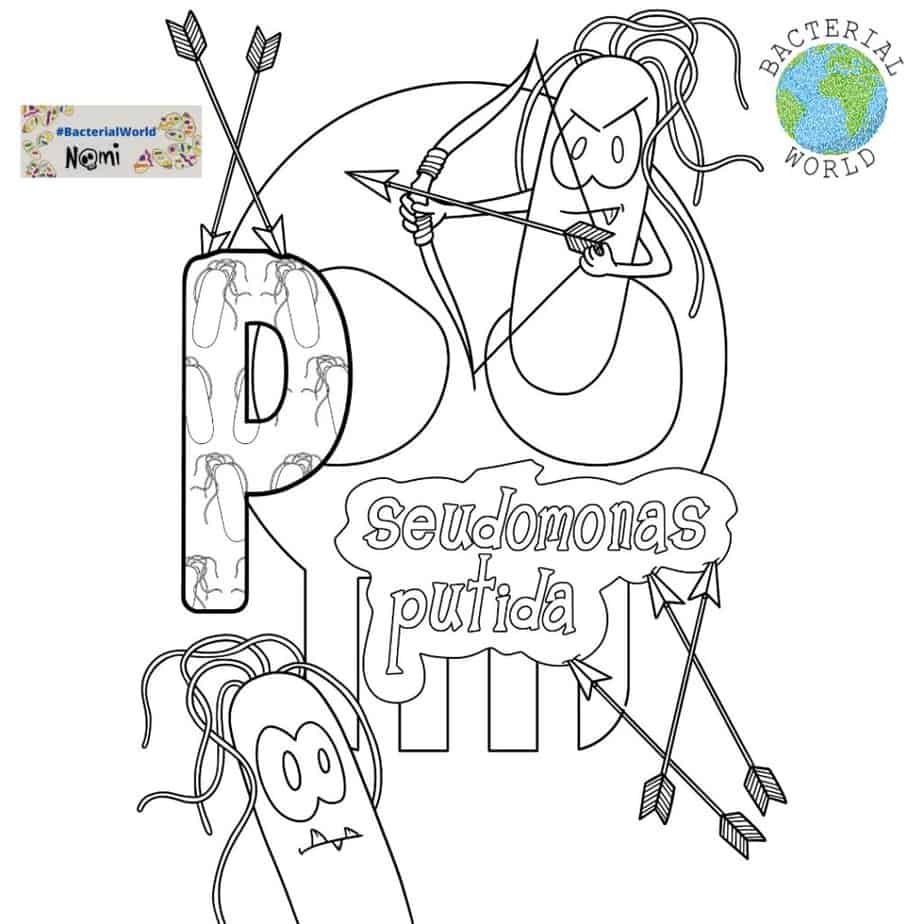
And plants are clever too as they make sure that only the right types of bacteria grow near them. For this, several plants release specific molecules through their roots that help Pseudomonas putida grow. The bacterium senses these molecules so that they activate the bacterium’s chemotaxis system.
Now, Pseudomonas putida uses its flagellum to swim towards these molecules. This movement ultimately leads the bacterium to the plant that released the molecules.
Pseudomonas putida as a biocontrol agent
Once the bacterium “found” the plant, it settles down near it and starts building biofilms. Within these biofilms, the bacteria are connected with each other and with the plant. Like this, they can easily exchange molecules and information with each other and with the plant and build close relationships.
Pseudomonas putida now produces molecules to help the plant grow. For example, some molecules extend the tips of the roots so that the plant can better take up nutrients from the soil.
Pseudomonas putida also breaks down complex nutrients in the soil that the plant use. This basically feeds the plant the needed nutrients. Other molecules from the bacterium activate the overall immune system of plants so that plant pathogens have a harder time infecting the plant.
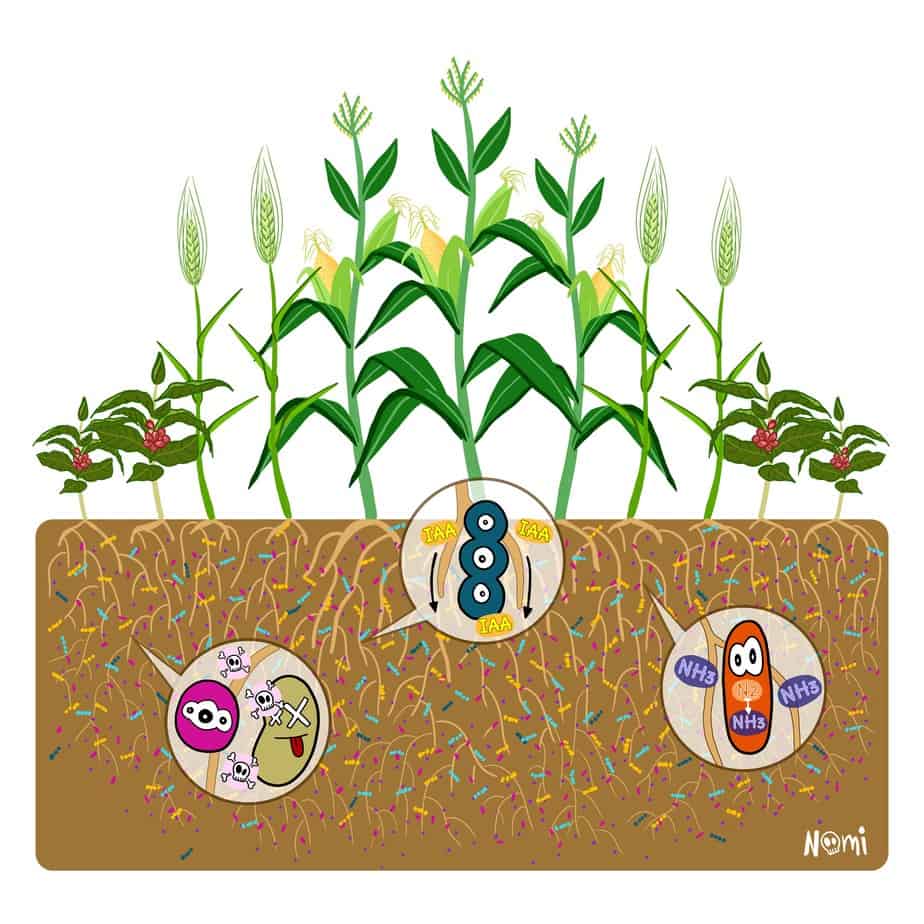
Altogether, Pseudomonas putida has similar features as biofertilizers that help plants grow.
How does bacterial biocontrol protect plants against intruders?
Pseudomonas putida can also directly fight off plant pathogens to protect their plant hosts. For this, it uses two strategies: It either holds back essential nutrients from plant pathogens or kills the intruder.
Not sure which strategy is more evil though…
Pseudomonas putida keeps essential nutrients to inhibit plant pathogens
All living organisms need iron to live and grow. And one efficient strategy to prevent other microbes from growing is by stealing iron from them.
Our immune system does it as well: All iron in our body is bound to specific transporters. Like this, no free iron swims in our blood for microbes to use. This defence mechanism is one of the first strategies of our immune systems to keep harmful bacteria from growing inside our bodies.
Similarly, Pseudomonas putida produces many different iron transporters that bind iron very efficiently. Like this, no free iron is present in the soil that other microbes could use.

Yet, this is not all. Pseudomonas putida is quite a naughty one since it can also steal iron-loaded transporters from other bacteria. This not only prevents the other bacteria from using the iron, but it also helps Pseudomonas putida grow.
Pseudomonas putida kills intruding plant pathogens
Lastly, Pseudomonas putida is a real fighter when it comes to protecting its host plant. This bacterium uses a special nanoweapon to kill plant pathogens.
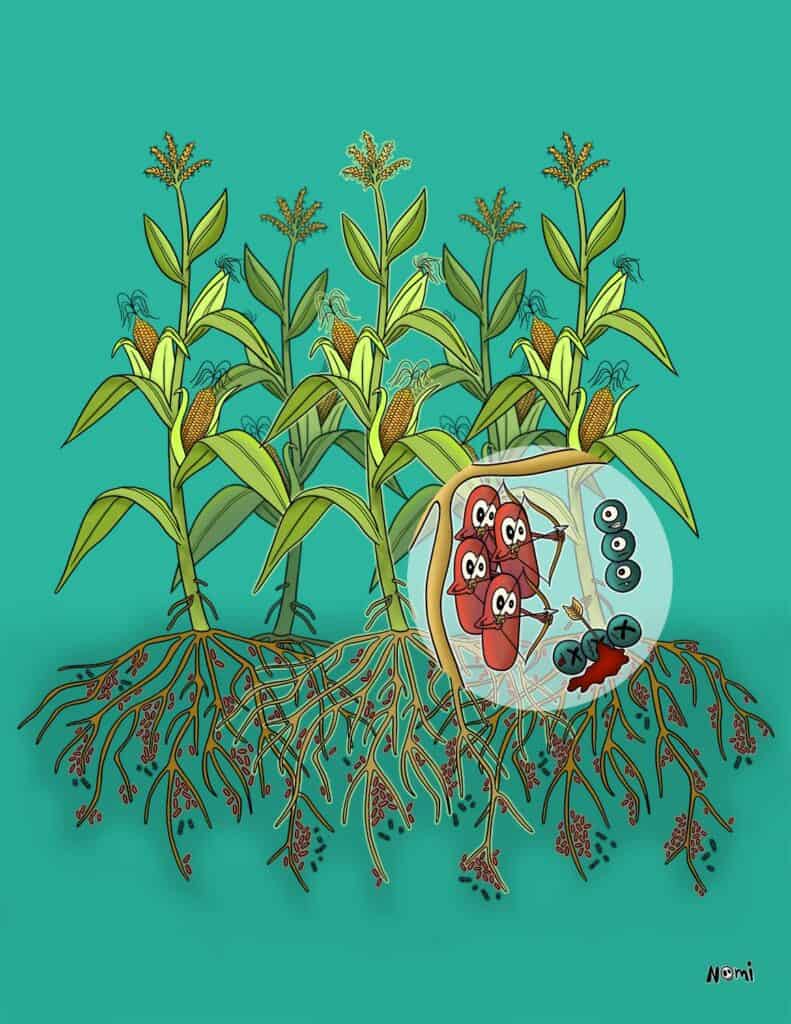
Our bacterial fighter carries a bow and arrow and is not afraid of using them to keep intruders off the plant. Pseudomonas putida actively shoots arrows together with lethal toxins into other bacteria to kill them. Many bacteria use this killer machine, called the type 6 secretion system. But interestingly, Pseudomonas putida seems to have a more efficient killing device than others.
Scientists proved that with a simple experiment. When different plant pathogens were growing inside plant leaves, the leaves got sick. However, when Pseudomonas putida was additionally living in the leaves, the plant leaves did not get sick.
Finally, the scientists let the plant pathogens grow together with a Pseudomonas putida bacterium that could not shoot its bow and arrow. Now, the plant leaves got sick again and the plants suffered from the plant pathogens.
These results show that Pseudomonas putida uses its bow and arrow to actively kill other harmful bacteria to protect plants. Even though the experiment was done in plant leaves, scientists are convinced that something similar happens in the root area of plants.
Bacteria as biocontrol agent to save our planet?
As soon as we better understand how exactly this plant warden protects its host from harmful bacteria, we could use Pseudomonas putida on a large scale. This would improve the health of plants so that they can grow more and better crops.
Hence, such a biocontrol agent would eventually help us have more food available for everyone.

